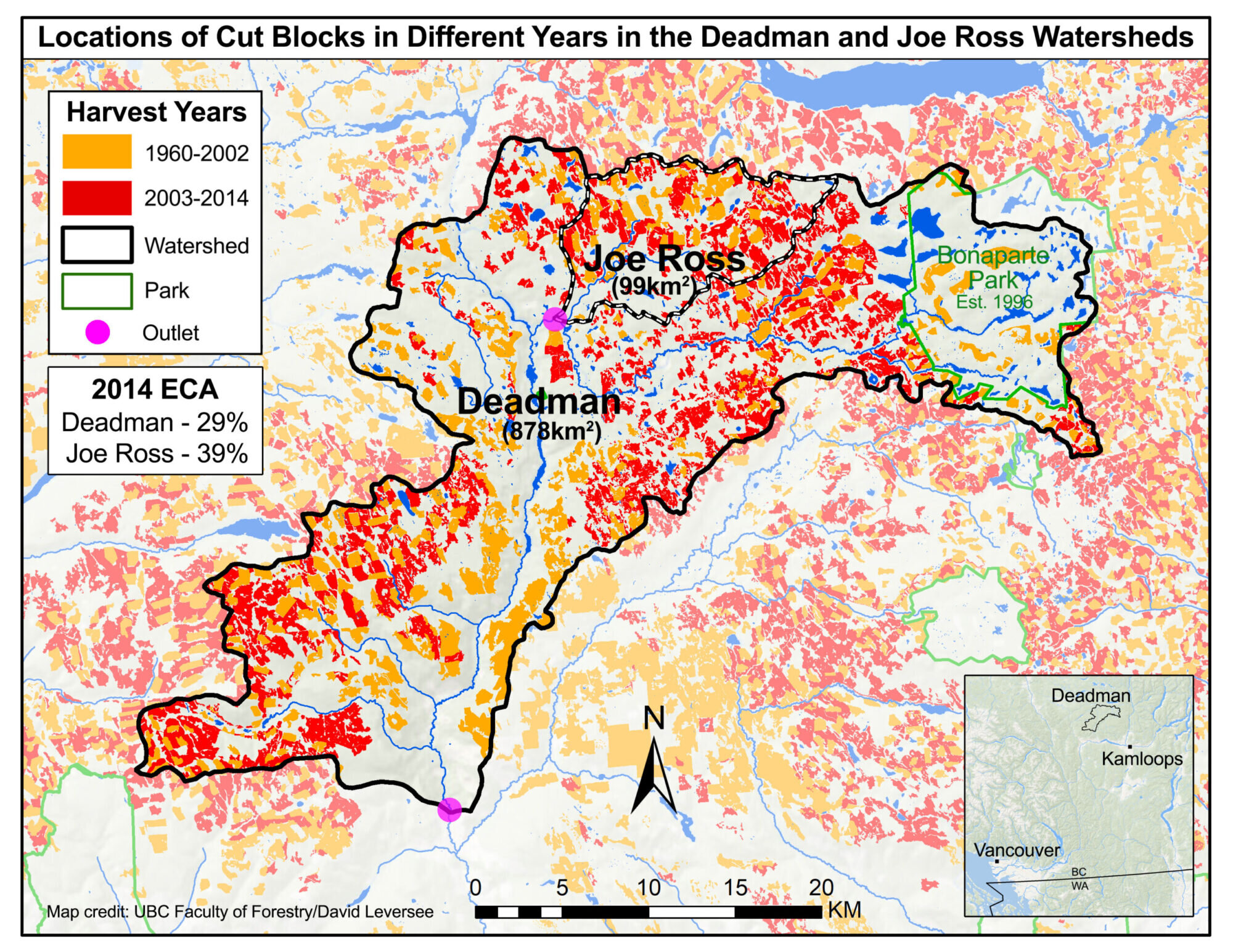Loss of forest cover is associated with an increase in the frequency of extreme flooding events, as well as floods of any size, according to a recent study conducted by the University of British Columbia (UBC).
While previous studies suggested that the impact of forest cover loss on flooding was limited to smaller floods, the UBC research focused on two snow-dominated regions in British Columbia, namely the Deadman River and Joe Ross Creek watersheds, and found evidence to the contrary.
“When only 21 percent of trees in the watershed were harvested through clearcut logging, the average flood size increased by 38 percent in the Deadman River and a staggering 84 percent in Joe Ross Creek,” says Robbie Johnson, the study’s lead author and a graduate student in applied science in forestry at UBC. “Furthermore, floods that used to occur once every 10, 20, 30, 40, and 50 years are now becoming more frequent.”
The study’s senior author, Dr. Younes Alila, a forestry professor at UBC, explains that clearcut logging impacts the melting of snow. “Reduced forest cover results in more snow on the ground and increased solar radiation reaching the snowpack. With less forest cover to intercept and shade the snow, more of it melts faster, leading to larger floods.”
Implications for Local Watersheds
The research team also discovered that the effects of clearcutting on floods are influenced not only by the total size of the logged area but also by specific local conditions, such as the size of the watershed, topography, sun exposure, presence of storage areas like lakes, and the location of cut blocks (defined areas authorized for logging), all of which impact water flow.
For instance, Joe Ross Creek, with its smaller-sized watershed, higher elevation, and predominantly south and west exposure, experienced greater increases in flood size compared to the Deadman River, which is about eight times larger, more diverse in sun exposure, and dotted with small lakes.
However, the analysis revealed that clearcut logging induced similarly significant increases in the frequency of the largest floods. The authors highlight that this study is the first to demonstrate the relationship between forest cover and flood mitigation, emphasizing the importance of watershed size.
Enhancing Forest Management
The study employed a unique method that isolates the effects of logging from those of the climate, enabling a more accurate evaluation of logging’s impact on flood risk in a watershed. Johnson notes, “This approach can be applied to other watersheds in the interior and on the coast of British Columbia.”
Dr. Alila describes the study as a crucial step toward understanding the complex connection between land cover changes and flooding. He states, “These results underscore the significance of forests at the watershed level, especially since replanted forests in cut blocks cannot provide the same hydrologic functions for decades. We hope this insight will contribute to better forest management practices, reducing potential risks to communities and the environment. The way forward involves sustainable reduction of clearcutting and the adoption of ecosystem-friendly alternative logging practices, such as thinning and selective tree harvesting.”
The study has been published in the Journal of Hydrology.
More information:
Robbie S.H. Johnson et al, Nonstationary stochastic paired watershed approach: Investigating forest harvesting effects on floods in two large, nested, and snow-dominated watersheds in British Columbia, Canada, Journal of Hydrology (2023). DOI: 10.1016/j.jhydrol.2023.129970
Citation:
Clearcut logging found to lead to more frequent flooding, including extreme floods (2023, August 2)
retrieved 3 August 2023
from https://phys.org/news/2023-08-clearcut-frequent-extreme.html
This document is subject to copyright. Apart from any fair dealing for the purpose of private study or research, no
part may be reproduced without the written permission. The content is provided for information purposes only.
Denial of responsibility! TechCodex is an automatic aggregator of the all world’s media. In each content, the hyperlink to the primary source is specified. All trademarks belong to their rightful owners, and all materials to their authors. For any complaint, please reach us at – [email protected]. We will take necessary action within 24 hours.

Jessica Irvine is a tech enthusiast specializing in gadgets. From smart home devices to cutting-edge electronics, Jessica explores the world of consumer tech, offering readers comprehensive reviews, hands-on experiences, and expert insights into the coolest and most innovative gadgets on the market.


